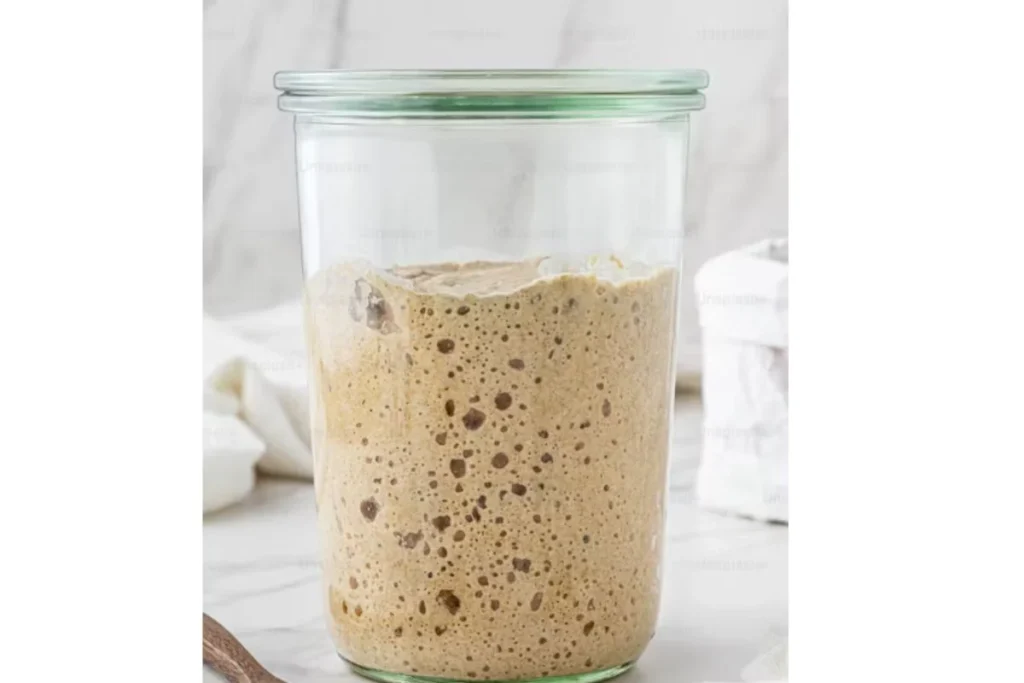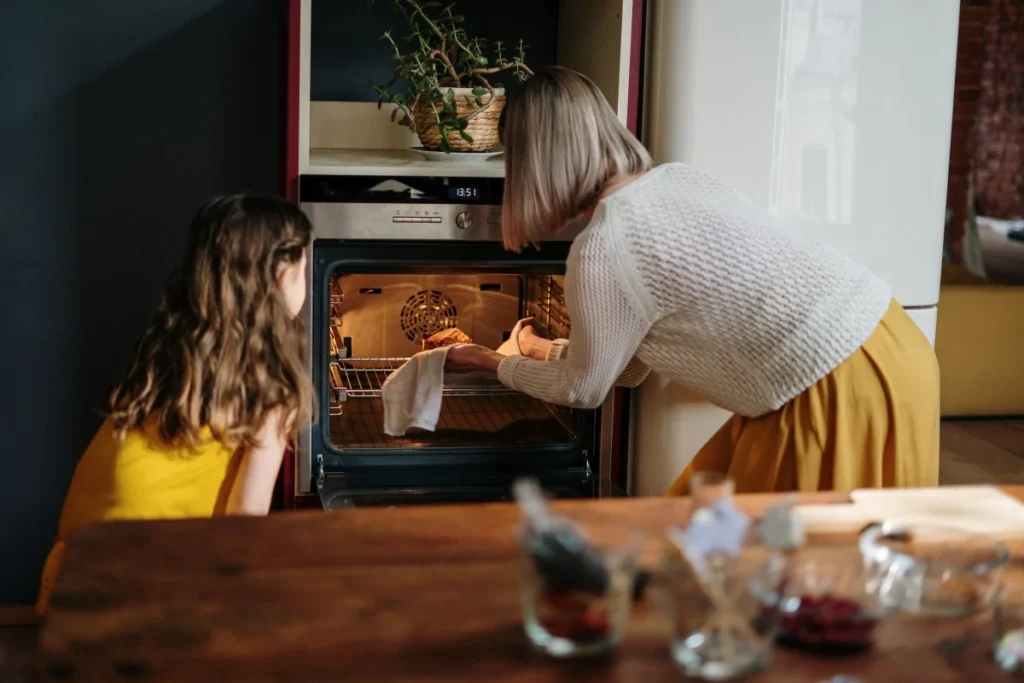
Sourdough Starter Issues When Traveling and How to Manage Them
Traveling with your sourdough starter can be a challenging task, but with the right knowledge and preparation, you can manage common issues on the go. Whether you’re off for a weekend trip or a longer journey, it’s key to keep your sourdough starter lively and healthy to bake tasty bread wherever you are.
In this article, I’ll share some expert tips and tricks that I’ve picked up to maintain my sourdough starter’s vitality while traveling.
So, if you’re like me—a sourdough enthusiast who can’t bear the thought of being without your prized starter while on the move—this article is a must-read.
Table of Contents
ToggleUnderstanding the Challenges of Traveling with a Sourdough Starter
Traveling with a sourdough starter can be tricky because it’s alive and needs special care. Sourdough is just flour and water mixed, but it traps wild yeast and bacteria from the air, creating a little ecosystem.
It’s super important to keep it healthy if you want to bake good bread. Here are some challenges and tips for traveling with a sourdough starter:
1. Risk of Spillage: Since sourdough starter is like a thick liquid, it can spill easily. Use a strong, airtight container or a jar with a tight lid to avoid this. You might also want to put the container in a sealed plastic bag or another layer of protection in your bag.
2. Temperature Changes: Sourdough starters don’t like big temperature changes. Too much heat can mess with the yeast and bacteria. Keep your starter in a place where the temperature stays pretty steady, and don’t leave it in a hot car or in direct sunlight.
3. Feeding Schedule: Sourdough starters need to be fed regularly to stay happy. Traveling can mess up their feeding schedule. If you’re only going away for a short time, try feeding your starter right before you leave. For longer trips, you might need to adjust how often you feed it or put it in the fridge to slow it down.
4. Airport Rules: If you’re flying, be aware of the rules about liquids. Pack your sourdough starter in containers that follow the airport rules, and be ready to explain what it is if you need to.
5. Altitude Changes: When you’re flying, the pressure inside sealed containers can change. To avoid any problems, leave some extra space in the container for the air to expand, or use a lid that lets air in and out.
6. Cleanliness: Keep your sourdough starter and its container clean to stop anything yucky from getting in. If you won’t have access to a sink for washing, bring some extra containers to use when you feed it.
7. Reviving Your Starter: When you get where you’re going, give your sourdough starter some time to get used to the new place. Feed it as soon as possible to wake it up and make it taste good again.
8. Dry Starter Option: Another option is to make a dry sourdough starter by drying out some of your active starter. This is less likely to spill, and you can easily bring it back to life by adding water and flour when you arrive.

Getting Your Sourdough Starter Ready for Travel
Before you hit the road, make sure your sourdough starter is good to go. To keep it happy and healthy during the trip, you need to prep it right. In the days leading up to your journey, change how you feed it. Try making it thicker by using less water than usual. This helps it hold onto moisture better, which is important when you’re on the move.
Also, give your starter a hearty meal before you leave. Feeding it plenty of food makes it stronger and better able to handle being left alone for a while. When you feed it last, add more flour than water to give it a boost.
If you’ll be away for more than a few days, stick your sourdough starter in the fridge a day or two before you leave. This slows down its activity so you don’t have to feed it as often while you’re gone. It’s a smart move that keeps your starter in good shape while you’re off on your adventure.
Packing and Moving Your Sourdough Starter Safely
When it comes to packing your sourdough starter for the trip, the right container is key. Get something leak-proof and airtight, like a glass or plastic container. You don’t want any surprises due to the sourdough’s acidity. And make sure the lid seals tight to avoid any spills on the road.
Put the container in another sealed bag or container, especially if you’re flying. This extra layer helps prevent leaks and keeps any mess contained. If you’re flying, remember the liquid rules and only pack a small amount of starter to stay within regulations.
Label the container clearly with feeding instructions in case someone else needs to take care of it. Make it clear when it needs feeding and remind them to keep it upright to avoid spills. Taking these steps lowers the chances of accidents during the trip, so your starter arrives safe and sound.
Dealing with Temperature Changes While Traveling
Temperature swings can mess with your sourdough starter while you’re on the move. Whether you’re going through different climates or just dealing with hotel room temperatures, it’s important to protect your starter.
Wrap your sourdough starter container in a towel or clothes to keep it insulated from extreme temperatures. This helps keep the temperature stable inside, so your starter stays happy.
If it’s going to be cold, consider putting your starter in an insulated bag or cooler. This extra layer of protection keeps it from getting too chilly and slowing down. And if you’re heading somewhere hot, keep your starter in a shaded, cool spot away from direct sunlight. You don’t want it getting too warm inside the container.

Maintaining Your Sourdough Starter’s Feeding Schedule On The Go
One of the critical aspects of caring for your sourdough starter while traveling is ensuring that it receives its regular feedings. The microbial community within a sourdough starter relies on consistent nourishment to remain healthy and active.
Here are practical strategies to maintain your sourdough starter’s feeding schedule on the go:
Adjust Feeding Frequency: If you know you’ll be away for a specific period, adjust the feeding schedule accordingly. For example, if you usually feed your starter every 12 hours, consider switching to a 24-hour feeding schedule temporarily.
Portable Feeding Kit: Prepare a portable feeding kit that includes pre-measured portions of flour and water. Zip-lock bags or small containers work well for this purpose. Label each portion to avoid confusion, and include clear instructions for anyone assisting with the feeding process.
Instant Flour Mix: To streamline the feeding process during travel, create an instant flour mix by combining flour and water in advance. This mixture can be portioned and stored in airtight containers. When it’s feeding time on the road, simply add the pre-mixed flour to your starter, reducing the hassle of measuring and carrying separate ingredients.
Research Local Ingredients: Before reaching your destination, research and identify local flour options. If possible, purchase a small quantity upon arrival to use in your sourdough starter feedings. This not only supports the local economy but also introduces new microbial elements to your starter, contributing to its diversity.
Utilize Bakeries or Cafés: In some cases, local bakeries or cafés may be willing to assist you with feeding your sourdough starter. Reach out to establishments in the area, explain your situation, and inquire if they can provide a small amount of flour and water for your starter. This collaborative approach allows you to maintain your feeding schedule while connecting with the local baking community.
Dehydrated Starter: Consider dehydrating a portion of your starter to create a backup. Dehydrated starters are more resilient and can be reactivated with water and flour when needed. This is a good option for longer trips.
Maintain Communication: If you’ve arranged for someone at home to care for your starter in your absence, stay in regular communication. Provide updates on your travel plans and confirm that feedings are taking place as scheduled. This ensures that any adjustments can be made promptly, preserving the health of your sourdough culture.

Rejuvenating Your Sourdough Starter After a Trip | Step-By-Step
Coming back home after a trip is always a happy feeling, but for sourdough enthusiasts, it also marks the time to revive and rejuvenate their beloved starter. Even with the best planning, travel can stress a sourdough culture, and upon your return, your starter may exhibit signs of fatigue or neglect.
Here’s a step-by-step guide on how to rejuvenate your sourdough starter after a trip:
1. Assessment: Begin by carefully examining your sourdough starter. Look for any changes in appearance, such as a crusty surface, unusual odors, or discoloration. While some signs of neglect are normal, any presence of mold or foul smells indicates potential contamination, and the starter may need more extensive rehabilitation.
2. Discarding and Feeding: To kickstart the recovery process, discard a portion of your sourdough starter. This helps remove any potential off-flavors or harmful byproducts that may have accumulated during the period of neglect. After discarding, feed your starter with a mixture of fresh flour and water. Aim for a higher hydration level in the initial feedings to reintroduce moisture and promote activity.
3. Gradual Transition: Recognize that your sourdough starter might be in a weakened state, and a sudden return to its regular feeding routine may overwhelm it. Gradually transition back to your standard feeding schedule, increasing the feeding frequency as the starter regains its strength.
4. Warm Environment: Create an optimal environment for your sourdough starter’s recovery by keeping it in a warm area. This encourages microbial activity and accelerates the fermentation process. A consistent, moderately warm temperature is especially crucial during the initial stages of revival.
5. Patience and Observation: Patience is key during the rejuvenation process. Observe your sourdough starter closely, noting any changes in volume, texture, and aroma. It may take several feedings before the starter fully regains its vitality. Be attentive to its response, adjusting the feeding routine as needed.
6. Flour Variety: Consider introducing a different type of flour during the recovery phase. If you typically use all-purpose flour, try incorporating whole wheat or rye flour. This diversifies the microbial population in your starter, contributing to its overall health and resilience.
7. Reviving Flavor: If your sourdough starter’s flavor seems lackluster after your trip, focus on gradually enhancing it. Feed the starter with a higher ratio of whole grain flour, as it introduces additional nutrients and contributes to a more robust flavor profile.
8. Extended Feeding Periods: To further strengthen your sourdough starter, extend the time between feedings. Allowing the starter to undergo a more prolonged fermentation period enhances its flavor complexity and encourages the development of a well-balanced culture.
Can You Fly With Sourdough Starter?
Yes, you can take sourdough starter on a plane. It’s considered a liquid, so if you’re carrying it in your carry-on, make sure it complies with the TSA’s liquid restrictions, which typically means each container should be 3.4 ounces (100 milliliters) or less.
If you have a larger amount, it’s best to pack it in your checked luggage. Make sure to check the specific regulations of the airline you’re flying with, as some may have additional restrictions or guidelines.
It’s also a good idea to pack the sourdough starter in a well-sealed container to prevent any leaks during the flight.
Sourdough Starter Issues When Traveling | Final Thoughts
Traveling with a sourdough starter requires thoughtful planning and proactive measures to overcome potential challenges.
By understanding the nature of sourdough starters and implementing the tips provided, you can ensure that your beloved culture remains robust and ready for baking, even when miles away from home.
With a little care and preparation, you can continue to enjoy the art of sourdough baking while exploring new horizons.
Lindsey Mackenzie
About me
Hi there! I’m Lindsey Mackenzie, the founder of Bake Smartly. Baking has been my passion since childhood, growing up in my father’s bakery. With Bake Smartly, I’m excited to share my love for all things sweet and savory. Join me on this delicious journey as we whip up scrumptious treats and sprinkle joy into every bite!






